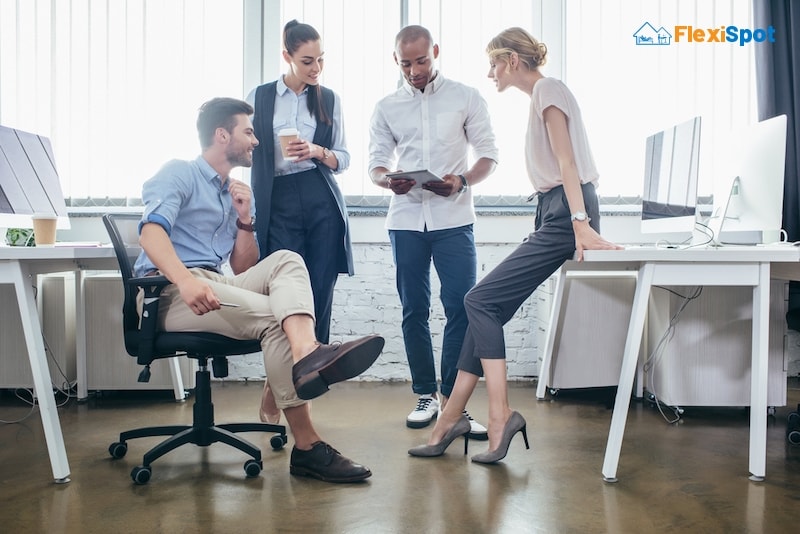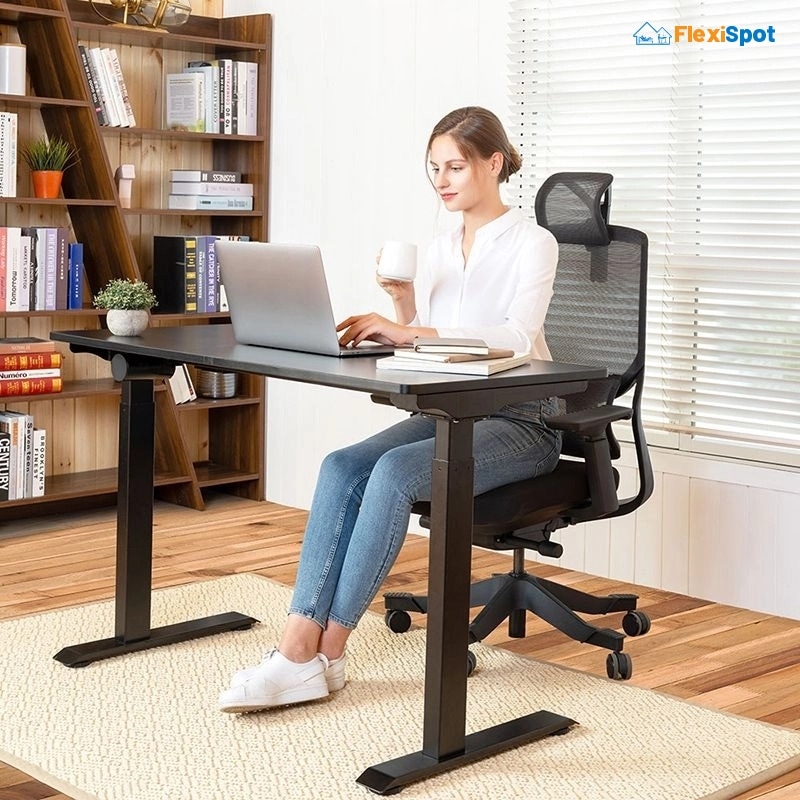Workplace design trends are constantly evolving, with new styles popping up every now and then to redefine what the ideal workspace should look like. In the past, workplace designs have focused largely on the aesthetic aspect, but this is steadily changing.
Moving away from the pure aesthetic, many styles now merge the design aspect with functionality in ways that will make sure that the workspace satisfies the aesthetic and the ergonomics to make it a better place to work in, thus boosting employee engagement.
Factors That Contribute to Workplace Design
There are a number of things that are taken into consideration when redesigning workplaces.
Demographic Change
The workforce demographics are constantly changing. As new people come in, old people leave and the environment around workplaces changes so does the actual workplace.
To put this in perspective, by 2016, millennials were the largest workplace cohort and had begun rising to management positions, while Gen Z’s were starting to enter the workforce.
Because these two generations have grown up with technology, the impact this has had on their workplace requirements is not to be taken lightly. Gone are the days when you could make young folk stick to the status quo – now the status quo changes with them.
Millennials and Gen Z’s have a strong desire to work in collaboration with their peers, in settings where feedback is frequent and constructive. As such, workplaces are quickly shifting towards collaborative spaces, moving away from individual cubicles.
These two generations are also very clear about what they want from a job – a work-life balance is important, as are comfortable workstations. With many of them becoming increasingly health conscious, they are also very particular about the effects of their workstations on their physical condition.
Staying seated for long hours at a time has quickly become unacceptable. Along with collaborative spaces, many of them also want ergonomic furniture in their workstations which will ensure that their workspace is comfortable to work in, and does not result in fatigue. As such, ergonomics and workplace design now go hand in hand.
Technological Advances
Another major driver of workplace dynamics is technology. Even in the past, technology has been a significant contributor, with its impact now growing as technology advances more and more rapidly.
In recent years, with the advent of laptops, tablets, and smartphones, workplaces have to start accommodating these new technologies. Gone are the days when all your work would be done on paper; functioning laptops and computers with the latest version of the software and operating systems installed are core requirements of any workplace.
With this new technology, organizations have been able to bring about positive changes – especially since the newer generations know exactly how to use this technology and get the most of it. At the same time, new solutions bring with them new problems.
Spending long hours hunched over a computer, and typing away can have negative effects on employees if their workstations are not designed with these things in mind. Eye strain, posture problems, and repetitive stress injuries – all of these have also become more common as workplaces change with technological advances.
This doesn’t mean that there aren’t solutions to these problems available – there are! With the right ergonomic workplace designs in place, employees can avoid the physical problems that stem from technology use and keep themselves motivated at the same time.
Talent Shortages
In the current work climate, the demand for talent far out does the supply. With trends changing and the approach to work changing, many organizations are in need of talent that has not yet entered the workforce. While in the coming years this problem will be resolved, the design aspect once again becomes significant.
Skilled workers nowadays value workplace design that is not just aesthetically pleasing, but also comfortable to work in. This means that the time they spend at work should not be fatiguing, their workstations should go easy on their bodies, and the workplace itself should be one that boosts spirits and makes them feel encouraged to keep working.
Workplaces that cater to these requirements will have a competitive edge in attracting and retaining talent. Therefore, other workplaces are slowly following suit.
Research and Data on Workplace Design
The simple fact is that almost all of us will place a lot more value on something if we know that research backs it up. In the past, with many organizations being more focused on making profits, employee satisfaction and engagement was often compromised.
Nowadays, things have changed. Research shows that physical surroundings have a significant impact on our mood and focus. Good workplace design would, therefore, keep these things in mind. Boosting productivity and focus allows workers to not just work better, but also make them feel like their health, well-being, and personal growth are valued, which boosts engagement.
Employees will also make better choices around their life and their work if the quality of their workplace is high.
Financial Factors
The physical workspace has always been a concern for organizations. In fact, it is almost always one of the largest expenses, and maximizing the efficient use of space has always been a priority.
However, now it is difficult to accurately anticipate and predict space needs. When keeping in mind that employees now prefer collaborative spaces, and the increasing use of new technology, organizations can no longer stick to the same old space-use ideas – such as cubicles. Cubicles were designed to maximize space and minimize the cost of the workspace, but cubicles are no longer an effective workplace design. In fact, cubicles may even bring productivity down.
As a result, employers have to start focusing on the other way to meet the costs of the workspace – more profit. And the easiest way to bring about greater profits is to increase the productivity, creativity, and focus of their employees.
As such, workplace design trends also greatly depend on financial factors.
How To Design The Workplace To Improve Employee Engagement
Keeping in mind workplace design trends for boosting employee engagement, we come down to some major factors: encouraging atmosphere and ergonomic workstations.
Encouraging Atmosphere
The right atmosphere can make a significant change in how you work. Think of the difference between a funeral and a birthday: the atmosphere changes everything! In the past, workplaces emphasized on getting the most work done within a specific number of hours, making the atmosphere around work suffocating and rigid.
Cubicles made it harder to communicate with other employees, thus bringing morale down. As humans, we thrive on social connections, and workplaces are one of the places we form such connections.
As such, the workplace atmosphere should be one that encourages interaction and growth for each employee and allows them to feel independent and free. This freedom instills a sense of belonging, which allows employees to feel encouraged and trusted enough to put in their best efforts towards their work.
Ergonomic Workstations
Ergonomic workstations are a necessity for any workspace for productivity and employee satisfaction. This means having suitable furniture that is designed to protect employees’ bodies.
This means that desks should be selected keeping employee requirements in mind. Particularly in collaborative settings, having the right desks and furniture available can change how employees work.
Having the right seating is also a major concern. Back pains, wrist pains, neck strains – all of these are very common in employees nowadays and having the right, ergonomic seating arrangements are very important in making sure that employees’ health is not compromised.
The Flexispot Soutien Office Chair is one such example. It comes with a solid 3D lumbar support system designed specifically to make sure that employees don’t end up with back pains and aches, as well as three height adjustment levels to ensure that employees of all heights and stature can sit comfortably.
The backrest curves ergonomically to provide maximum comfort, not just to your back, but also to your neck. It also comes with a 45-degree tilt, which lets you recline comfortably when you decide to take a break, and has adjustable seat depth to help you find the right position in your seat depending on your body shape.
It also has cushioned armrests to make sure you’re sitting in the appropriate position at your desk – whether you’re typing away at a document or using your mouse, keeping your arm in the right position will make sure you don’t end up with sprained wrists or aching forearms.
The chair is also made of breathable mesh that allows air to pass through and keeps you from sweating after spending long hours in the same spot. Having seats that are comfortable and adjustable for all types of employees can be a major plus factor in any workspace.
Workplace design trends will continue changing, but it is likely that the above-mentioned factors will be the major contributors. Ergonomics, on the other hand, will remain important as long as employees are ‘going to work. Therefore, staying on top of workplace ergonomics will ensure productivity and engagement, no matter what.




